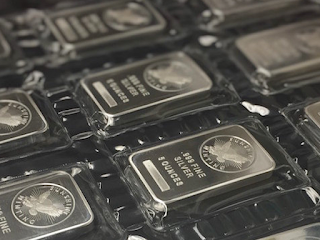Lobo Tiggre says silver recovery coming, with the possibility of gaining a minimum of 25%.
Like many analysts before him, Kitco's Lobo Tiggre recently took note of just how disproportionate the gold/silver ratio is. According to the Kitco article, the ratio remains at historic highs of around 85, meaning that roughly 85 ounces of silver are needed to buy one ounce of gold.
Tiggre thinks this perfectly illustrates the harshness of silver's price lag behind gold. Over the past few decades, the ratio has stood firmly between 50-60, which should put silver prices above $21 an ounce based on gold's current standing. Going back further, the gold/silver ratio was usually tied closer to the metals' natural supply. U.S. law initially set the ratio in coinage at 15:1, while Ancient Rome had it at 12:1. According to the article, a ratio of even 18 would translate to silver prices of roughly $70 an ounce.
All this is happening during a time when demand for silver is flourishing, both among investors and manufacturers. While there isn't a clear explanation as to what's causing diminished silver prices, Tiggre places the blame on excessive above-ground supply due to silver mostly being mined as a byproduct of other industrial metals. Because these metals have been doing very well lately, a surplus of silver ore has been dug up that should become depleted in the near future. In reality, true silver mine production has been falling behind demand for years, reports Kitco.
Tiggre believes we can take cues from past occurrences where the gold/silver ratio was so out of proportion. In each of the three instances over the last two decades, an excessively-high ratio quickly made way for a major rebound in silver prices. Tiggre notes, however, that there are several technical differences this time around.
Silver was always more volatile than gold, meaning that spikes in gold prices such as those in 1980 and 2010 led to even greater spikes for silver, states the articles. Exacerbating this point is the fact that silver prices have been moving further away from gold since 2011. If previous charts are any indicator, this means that the next instance of silver playing catch-up will be momentous.
There are other factors that could expedite or intensify silver's comeback. A potential strengthening of China's economy could offset the global growth deceleration and provide silver with even more tailwind. Jewelry demand is already expected to intensify in the Asian nation this year, and an economic boom would deplete silver's available supply even faster. The latter will happen largely due to solar panel production, explains Tiggre, as manufacturers will no longer be able to cut production costs through silver once panel demand ramps up.
To Tiggre, the question of silver's recovery has long become a matter of when, not if. Instead, the analyst is now searching for optimal entry points before a price leap that should, according to historical precedent, see silver gain a minimum of 25%.


